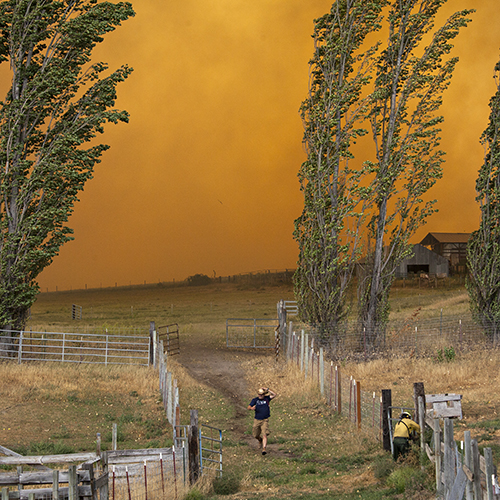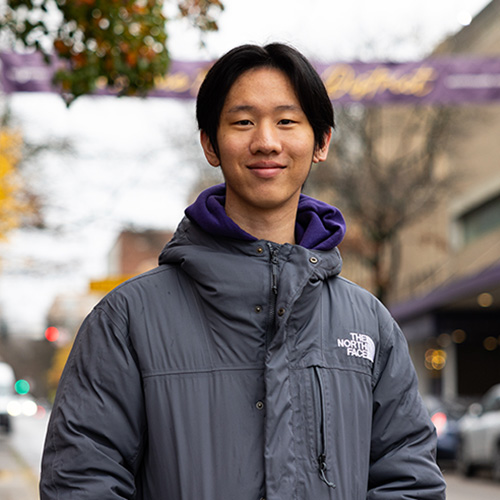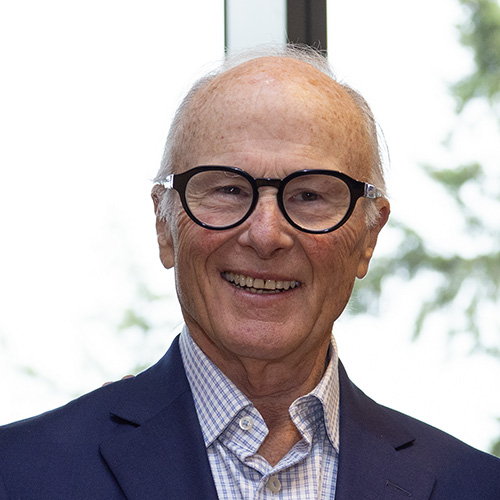WRF planning grant fuels effort to unify and elevate research on the brain across the university.
Neuroscience at the University of Washington is thriving—and diverse. Across multiple departments, schools, and campuses, researchers and educators are advancing our understanding of the brain and nervous system in innovative and wide-ranging ways. From the molecular and cellular mechanisms of neurodevelopment to artificial intelligence, music cognition, neurosurgical innovation, and more, UW’s neuroscience footprint is large and growing.
But it’s also been fragmented.
That’s the challenge—and the opportunity—a new initiative aims to address.
Backed by a $200,000 planning grant from the Washington Research Foundation (WRF), a cross-campus team is working to develop a more integrated, collaborative vision for neuroscience at UW. And the College of Arts & Sciences (CAS) is playing a key role in defining how to build interdisciplinary teams to explore and pursue critical issues as well as tackle unmet needs in moving neuroscience forward.
Their goal isn’t to reinvent or replace existing programs. Instead, the team wants to build stronger bridges across disciplines, lower barriers to collaboration, and help the neuroscience community—both within UW and across the region—view itself as part of a larger whole.
A grassroots approach to a big-picture question
“Neuroscience as a field is very broad, and UW is very strong in it, but we operate in different silos—different colleges, departments, etc. The planning grant from the WRF is creating a chance for us to outline and present a unified presence in neuroscience for students, faculty, researchers, and the community,” said Daniel Pollack, professor and divisional dean of natural sciences in the College of Arts & Sciences.

This listening-focused, grassroots approach is central to the initiative. Over the past several months, the team has hosted town halls, one-on-one conversations, and collaborative workshops designed to surface ideas and identify priorities from across UW neuroscience. Participants have included faculty, students, clinicians, and staff from UW Medicine, the College of Arts & Sciences, the College of Engineering, and other schools, as well as collaborators at partner institutions like the Allen Institute, Seattle Children’s Hospital, and regional universities across Washington state.
Despite their wide-ranging areas of expertise, many shared a common theme: a sense of excitement about the work being done across UW, and a desire for more opportunities to connect and learn together.
“We’re thrilled to support this planning grant to identify and to bring together the many strengths of neuroscience in our region,” said Meher Antia, WRF’s director of grant programs. “We hope that the planning process will offer opportunities for collaboration and innovation that can have a long-term impact.”
Four pillars, one shared mission
To help shape the initiative, the planning team developed a flexible framework organized around four core pillars:
- Research: Encourage cross-disciplinary and cross-institutional collaboration to tackle big scientific questions.
- Education: Expand and integrate neuroscience training opportunities for students and trainees at all levels, from undergraduate to postdoc.
- Clinical Care: Strengthen connections between discovery and treatment to improve patient outcomes and real-world impact.
- Community Engagement: Make neuroscience at UW more visible, accessible, and inclusive, both on campus and in the wider community.
Each of these pillars emerged from community feedback and reflects longstanding strengths at UW, as well as areas where deeper coordination could unlock new possibilities.
“We have world-class research and clinical programs here, including psychology, biology, neurobiology, neurology, biophysics, medicine, engineering, and the mathematical sciences. These groups have been talking regularly to build a vision and trust and develop ideas about what an integrated entity could look like,” said David Perkel, professor of biology and otolaryngology and director of the UW undergraduate program in neuroscience.

He continued, “There’s so much happening here. But sometimes it feels like people are working in parallel without realizing what others are doing, just across campus—or across the street. We want to make those connections easier and more visible. Yes, it’s big and ambitious to develop a multidisciplinary neuroscience institute, but it’s happening. There’s a lot of energy happening around this as we bring together academic and research folks into the same room. It’s more than just UW’s reputation throughout areas like CAS and UW Medicine. Together, we can make something truly unique, and we’re excited.”
Ideas in motion
Already, the initiative is beginning to generate new energy. Last fall, the team launched a small program, with the help of WRF’s award, which involves mini-grants designed to help people test ideas, build new partnerships, and explore creative approaches to connecting neuroscience across campus. More than 20 teams responded with proposals ranging from shared data resources to interdisciplinary course development to equity-focused outreach projects.
The initiative also hosted a series of town halls that brought together faculty and students from fields as varied as computer science, psychology, biology, music, rehabilitation medicine, and education. For many participants, just hearing what others were working on sparked new ideas and potential collaborations.

“Neuroscience is such an interesting field: It’s all about learning how the brain and nervous system works—so much of that is what makes us human,” said Shelly Sakiyama-Elbert, professor and vice dean of research and graduate education, UW School of Medicine. “These are questions that are hard to tackle in only one part of the discipline. For example, the way a neuroscientist and a clinician approach questions may be very different, but you need all those differing perspectives to answer those questions.”
For example, Sakiyama-Elbert says, teams of medical students or residents could collaborate with postdocs or students from CAS or College of Engineering to think about gaps between discovery/conceptualization and implementation, and how those could be addressed by potential new products brought to market.
From vision to action
The WRF planning grant is just that—a planning grant. WRF made the award to enable the UW team to develop a detailed plan for the neuroscience initiative that could significantly advance Washington’s life-science ecosystem. The work ahead will focus on turning the many ideas and insights gathered so far into a clear and sustainable roadmap for the future.
That roadmap will aim to reflect the diversity of neuroscience at UW while identifying shared goals and practical steps that can support growth, inclusion, and excellence across the board.
Potential directions include new shared spaces for collaboration, a more unified web presence to showcase neuroscience across UW, expanded interdisciplinary training pathways, and new mechanisms for coordinating grant support and funding opportunities.
But the team is clear: this is not a one-size-fits-all solution. It’s about amplifying what’s already strong, finding better ways to work together, and making sure everyone—students, researchers, clinicians, and community partners—feels like they’re part of something bigger.
Pollack said, “The science doesn’t care what college it’s in. A cross-disciplinary effort like this will uplevel our capabilities in neuroscience, in a unified way—which will benefit everyone. For example, wouldn’t it be great if an undergrad coming to UW could see all the different kinds of research that’s happening, and students and other academics could seek out neuroscience experts who have research opportunities, or a neurology researcher could easily join up with someone in linguistics, for example? People don’t benefit from having their research siloed. It’s challenging to break them down, but this effort can do that.”
The science doesn’t care what college it’s in. A cross-disciplinary effort like this will uplevel our capabilities in neuroscience, in a unified way—which will benefit everyone.
More Stories

10 Arts & Sciences Stories from 2025
As 2025 comes to a close, we're sharing some of the year's top Arts & Sciences stories.

The Public Impact of Private Cities
Geography major Edwin Bai has researched private cities, developed by individuals and corporations, that "take the libertarian idea of low government regulation to the maximum."

A Transformative Gift for Arts & Sciences
To honor his wife and support the college that has meant so much to both of them, former Arts & Sciences dean John Simpson created the Katherine and John Simpson Endowed Deanship.
